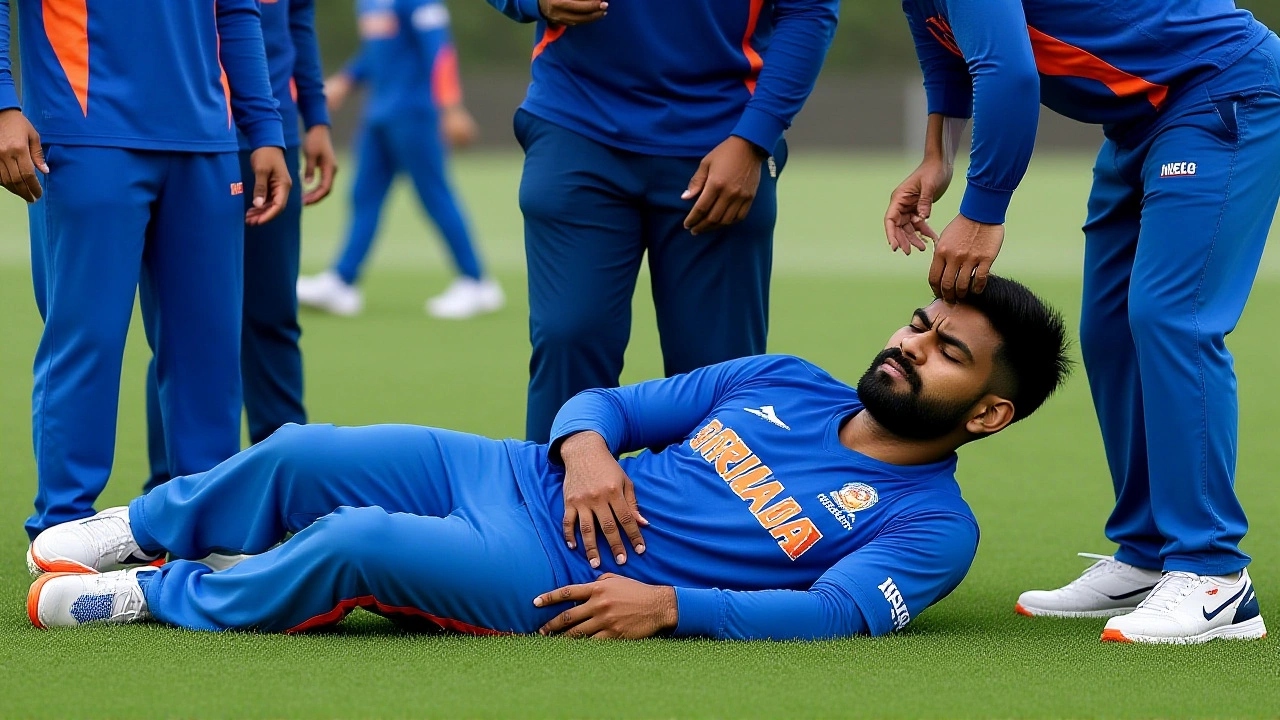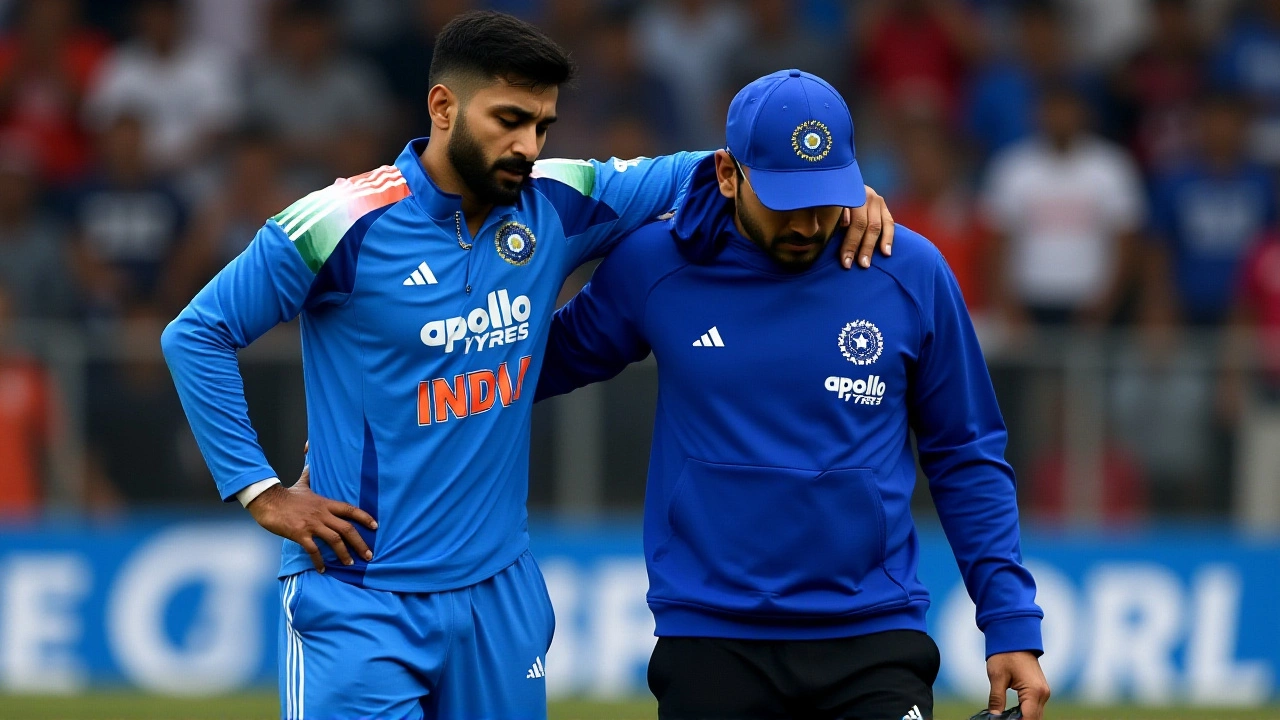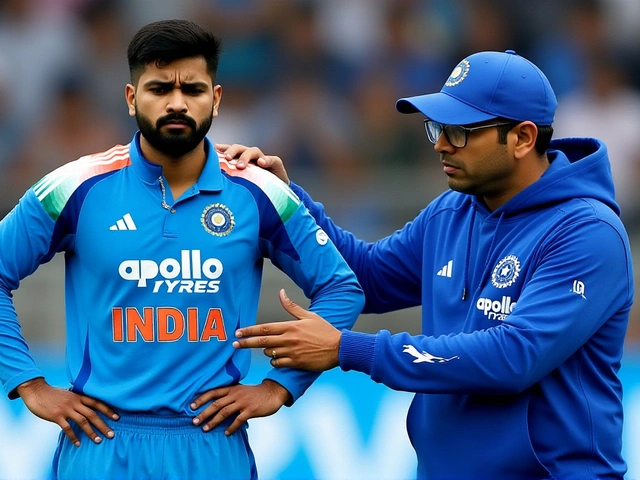When Shreyas Iyer went down chasing a catch at the Sydney Cricket Ground on October 27, 2025, no one thought it was anything more than a hard fall. But within minutes, the Board of Control for Cricket in India (BCCI) medical team knew they were dealing with something far worse — internal bleeding so severe, a source told the Press Trust of India, it could've been fatal. The 30-year-old ODI vice-captain, known for his calm at the crease and sharp fielding, was rushed to a Sydney hospital within 20 minutes of the 3:15 PM AEDT incident, and by nightfall, he was in the ICU. This wasn’t just a bad bruise. It was a ruptured rib piercing internal tissue, triggering bleeding that threatened his life. The twist? He’d just taken a stunning catch to dismiss Alex Carey, Australia’s wicketkeeper, in the 38th over of the third and final ODI of India’s tour.
A Injury That Almost Killed Him
Iyer, who made his ODI debut in 2018 and has since scored 1,916 runs in 42 matches, including five centuries, didn’t scream or clutch his side. He got up slowly, winced once, and walked off. The physio noticed the unnatural angle of his ribcage — not from a direct blow, but from the violent impact of landing on his left side while diving full stretch. “He’s one of those players who plays through pain,” said a BCCI insider. “But this wasn’t pain. This was a warning sign.” The team doctor, part of the BCCI’s updated medical protocol introduced in January 2025 after several IPL injuries, ordered immediate transport. No waiting. No ‘let’s monitor.’ By 3:35 PM, an ambulance was en route.What Happened in the ICU
Doctors at the undisclosed Sydney hospital confirmed internal bleeding around the spleen and possible minor liver laceration. “If he’d waited another hour, he could’ve gone into hemodynamic shock,” said a medical source familiar with his case. “He was lucky the team acted so fast.” Iyer’s condition stabilized overnight, but he remains under 24/7 monitoring. The BCCI’s protocols now mandate ICU admission for any player with suspected visceral trauma — a direct result of the 2024 IPL incident where a player collapsed after a similar fielding impact. “We’re not taking chances anymore,” said a BCCI official. “Cricket’s a physical game. Sometimes, the body doesn’t tell you until it’s too late.”The Match Went On — And India Won
While Iyer was being scanned and stitched, the match continued. India, without their vice-captain, fielded with 10 men for the final 12 overs of Australia’s innings. Pat Cummins’s side posted 287, fueled by a gritty 84 from Alex Carey. India’s chase was led by Rohit Sharma, 38, who anchored the innings with a composed 72. They won by five wickets, sealing a 3-0 series sweep after victories in Brisbane and Melbourne. But the celebration was muted. Players wore black armbands. The crowd, usually raucous, fell silent when Iyer’s name was announced on the big screen.
Families, Flights, and Future Uncertainty
By October 28, the BCCI had arranged for Iyer’s wife and parents to fly from Mumbai to Sydney, with flights booked for the next morning. The Board of Control for Cricket in India (BCCI) is coordinating with Emirates to ensure Iyer doesn’t fly back with the team on October 29. Instead, he’ll remain in Sydney until cleared — likely between 48 and 168 hours — before traveling home under medical escort. “He’s a fighter,” said his former domestic coach. “But even fighters need time to heal. This isn’t just about cricket. It’s about survival.”Why This Changes Everything
The Sydney Cricket Ground has hosted 85 ODIs since 1979. This was the first time a player required ICU admission for an on-field injury. The incident has already sparked debate: Are fielding drills too aggressive? Should players wear rib guards in ODIs? The BCCI says it’s reviewing its gear standards. Meanwhile, Shreyas Iyer’s absence could reshape India’s middle order for the next 12 months. His replacement, Ravindra Jadeja, was dropped just weeks ago — a decision now under scrutiny.
Timeline: The Critical Hours
- 1:30 PM AEDT, October 27, 2025 — Third ODI begins at Sydney Cricket Ground
- 3:15 PM AEDT — Iyer takes catch, collapses after landing
- 3:35 PM AEDT — Transported to hospital
- 5:00 PM AEDT — Diagnosed with internal bleeding; admitted to ICU
- 7:00 PM AEDT — India wins match by 5 wickets
- October 28, 2025 — Family arrives in Sydney
- October 29, 2025 — Team departs for Mumbai; Iyer remains under observation
Frequently Asked Questions
How serious is Shreyas Iyer’s injury?
Iyer suffered internal bleeding due to a rib fracture, likely damaging his spleen and possibly the liver. Without immediate hospitalization, this could have led to fatal internal hemorrhage within 24–48 hours. He’s stable but remains in ICU for monitoring. Recovery could take 6–8 weeks, and he’ll need imaging clearance before returning to cricket.
Why did the BCCI act so quickly?
After two serious injuries in the 2024 IPL — including one player who nearly died from delayed treatment — the BCCI overhauled its medical protocols in January 2025. Now, any suspected visceral trauma triggers immediate hospital transfer, bypassing on-site observation. This case proves the system worked.
Will Shreyas Iyer play again this year?
Unlikely. Even if he’s discharged in a week, returning to high-intensity cricket requires 6–8 weeks of rehab. With the ICC Champions Trophy in 2026 looming, he’ll miss the remainder of 2025. His place in the ODI side is now up for grabs, with young batsmen like Yashasvi Jaiswal and Suryakumar Yadav likely to be promoted.
Could this lead to mandatory protective gear in ODIs?
Yes. While rib guards are common in Tests and T20s, they’re rarely worn in ODIs due to perceived bulk. But after this incident, the BCCI and ICC are reviewing gear standards. Some experts are calling for mandatory lightweight carbon-fiber rib protection in all formats — especially for fielders near the boundary.
What’s the impact on India’s team strategy?
Iyer was India’s anchor in the middle order — calm, technically sound, and reliable under pressure. His absence forces a reshuffle. Rohit Sharma may open more often, pushing KL Rahul to No. 3, and could promote Suryakumar Yadav to No. 4. The team loses a key decision-maker, too — Iyer was vice-captain for a reason. His leadership void will be felt in high-pressure chases.
Has this happened to an Indian cricketer before?
Not since Kuldeep Yadav’s appendicitis in Bangladesh in October 2023. But the last time an Indian player faced life-threatening internal trauma during an overseas tour was in 2011, when Virender Sehwag was hospitalized in South Africa after a collision. Iyer’s case is the most severe on-field injury for India in over a decade — and the first requiring ICU admission since 2005.



